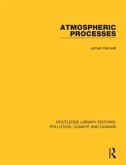Corona, the outermost layer of the solar atmosphere, is made up with very hot and taneous plasma material. The density and temperature structuring of this layer, is largely inhomogenous. Temperatures, at certain locations, can reach upto tens of million kelvin (MK). One of the key questions regarding the coronal physics is to identify the ubiquitous source(s) which can sustain this high temperature profile of the coronal plasma. One of the potential candidates in this case, is the family of magnetohydrodynamic (MHD) waves. These waves can propagate from the lower atmosphere to the solar corona and can partially (or fully) dissipate their energy to the surrounding coronal medium. In fact, different physical parameters such as the density, magnetic field and temperature of the host structure can also be inferred by studying the different properties of the propagating MHD wave


![Analog Computing Techniques Applied to Atmospheric Diffusion [electronic Resource]: Continuous Line Source Analog Computing Techniques Applied to Atmospheric Diffusion [electronic Resource]: Continuous Line Source](https://bilder.buecher.de/produkte/66/66192/66192556m.jpg)





